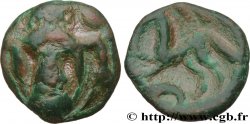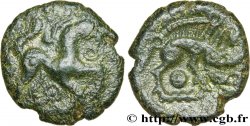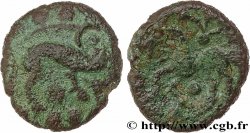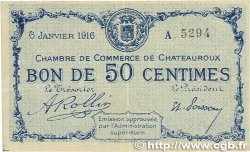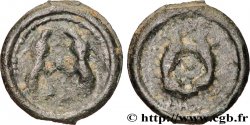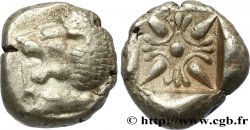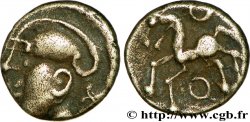v29_0748 - GALLIA BELGICA - AMBIANI (Regione di Amiens) Denier d'argent scyphate dit au sanglier
MONNAIES 29 (2007)
Prezzo di inizio : 140.00 €
Valutazione : 250.00 €
Prezzo realizzato : 140.00 €
Numero di offerte : 1
Offerta maxima : 180.00 €
Prezzo di inizio : 140.00 €
Valutazione : 250.00 €
Prezzo realizzato : 140.00 €
Numero di offerte : 1
Offerta maxima : 180.00 €
Tipo : Denier d'argent scyphate dit au sanglier
Data: c. 60-50 AC.
Nome della officina / città: Amiens (80)
Metallo : argento
Diametro : 14,5 mm
Asse di coniazione : 6 h.
Peso : 0,65 g.
Grado di rarità : R3
Commenti sullo stato di conservazione:
Exemplaire frappé sur un flan très fin. Contours irréguliers avec des manques de métal, mais l'ensemble des types de droit et de revers sont néanmoins identifiables. Patine grise avec des zones plus sombres
N° nelle opere di riferimento :
Diritto
Titolatura diritto : ANÉPIGRAPHE.
Descrittivo diritto : Tête casquée stylisée à droite, les favoris travaillés en zigzags.
Rovescio
Titolatura rovescio : ANÉPIGRAPHE.
Descrittivo rovescio : Cheval libre galopant à droite, la tête formée par un petit triangle ouvert à l'extrémité globulée ; au-dessus, une S inversée et pointée et un animal allongé à tête triangulaire ; (entre les pattes, un sanglier enseigne à droite).
Commento
Au revers, le sanglier est hors flan, mais l'animal typique de cette rare variété est entièrement visible ; il est décrit par les auteurs du Nouvel Atlas comme un "petit monstre annélidé à la queue en crochet et à la tête triangulaire" et remplace le simulacre d'aurige ou de victoire du denier à l'hippocampe.
Ce type de denier est si rare que les deux exemplaires qui illustrent le Nouvel Atlas sont repris du Traité de S. Scheers et colorisés.
On the reverse, the boar is off-flan, but the typical animal of this rare variety is fully visible; it is described by the authors of the New Atlas as a \\\"small annelid monster with a hooked tail and a triangular head\\\" and replaces the simulacrum of a charioteer or victory of the denarius with the seahorse. This type of denarius is so rare that the two examples illustrating the New Atlas are taken from the Treatise of S. Scheers and colorized
Ce type de denier est si rare que les deux exemplaires qui illustrent le Nouvel Atlas sont repris du Traité de S. Scheers et colorisés.
On the reverse, the boar is off-flan, but the typical animal of this rare variety is fully visible; it is described by the authors of the New Atlas as a \\\"small annelid monster with a hooked tail and a triangular head\\\" and replaces the simulacrum of a charioteer or victory of the denarius with the seahorse. This type of denarius is so rare that the two examples illustrating the New Atlas are taken from the Treatise of S. Scheers and colorized







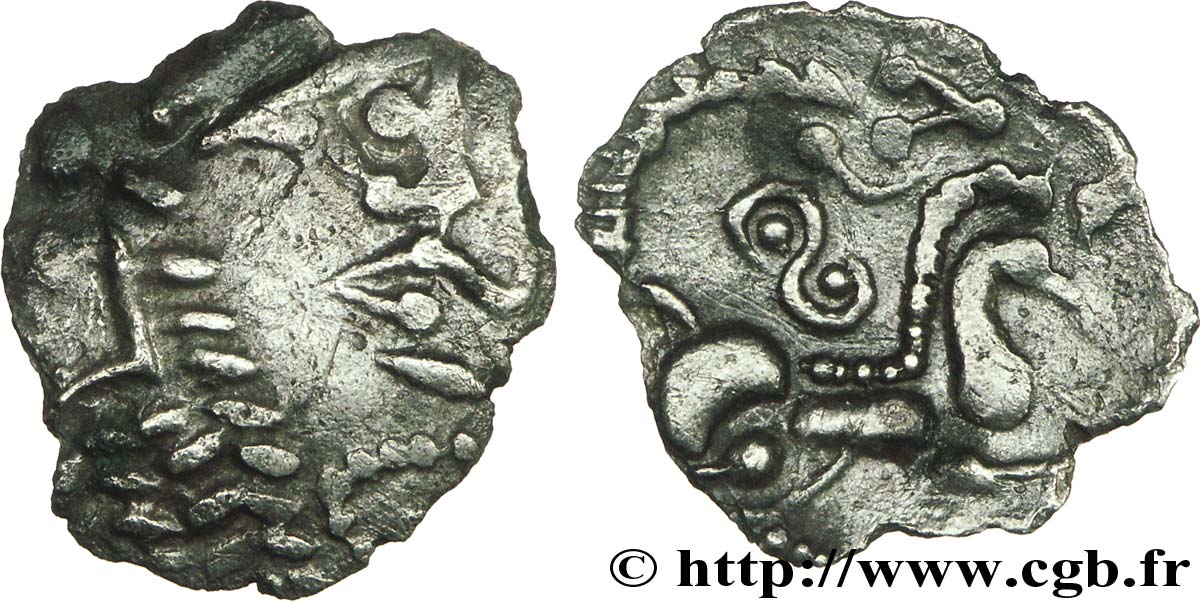
 Segnalare un errore
Segnalare un errore Stampate la pagina
Stampate la pagina Condividi mia selezione
Condividi mia selezione Fai una domanda
Fai una domanda Consegnare / vendere
Consegnare / vendere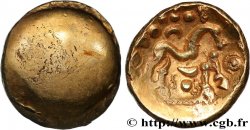
 Descrittivo
Descrittivo